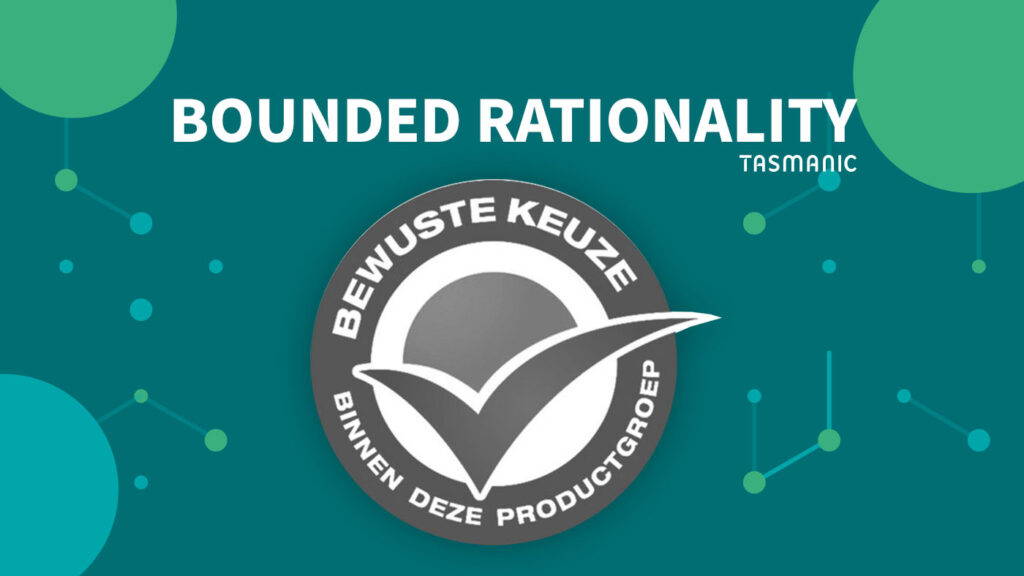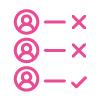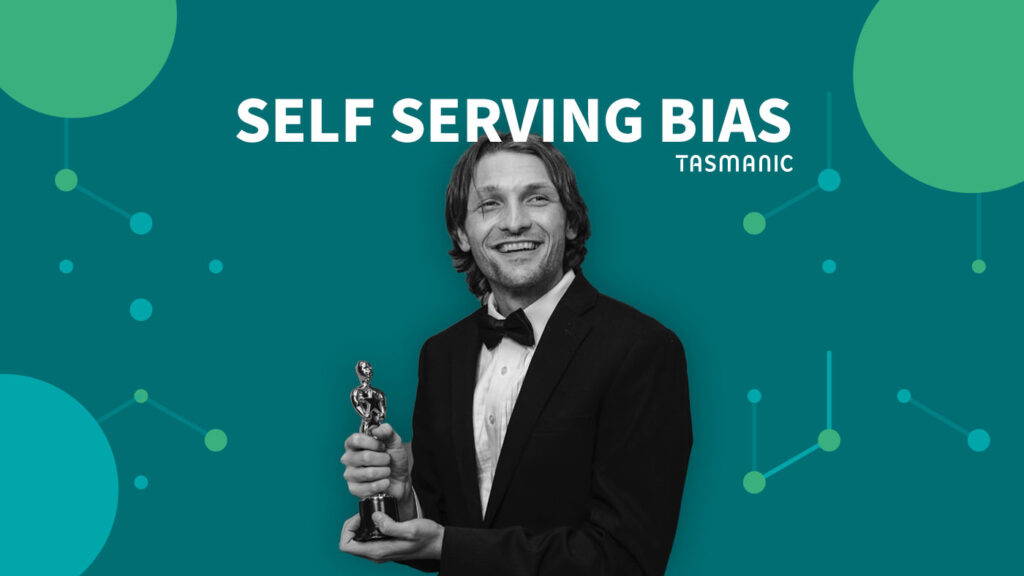
Introduction
As a business owner, you must make dozens of decisions every day. From small choices about office supplies to strategic decisions about investments or personnel management. In an ideal world, you would be able to analyze all available information for each decision and make the perfectly rational choice. But reality is different: you have limited time, limited information and a limited ability to process everything. This phenomenon is called bounded rationality.
In this article, we explore how you can embrace bounded rationality and use it to achieve better business results.
What is bounded rationality?
Bounded rationality or limited rationality is our tendency to go for good, rather than for better or best (Simon, 1955).
Herbert Simon, who won the Nobel Prize in Economics for his work on bounded rationality, showed that we engage in limited rationality when we make choices. Especially when we have little time, we often choose options that meet minimal requirements - such as a competitive price - without extensively examining all the alternatives. We then settle for a "good" rather than the "best" solution simply because we don't have the motivation, time or energy to look further.
This does not mean that we make bad choices. On the contrary, we often make fine decisions that meet our most important criteria. But there could theoretically be better options that we haven't considered. It's a pragmatic approach: achieving a satisfactory result with reasonable effort, rather than endlessly searching for the perfect alternative. Simon called this "satisficing" - a combination of "satisfying" and "sufficing. It is a strategy that helps us function effectively in a complex world where we simply cannot know or consider everything.
How does bounded rationality arise?
Bounded rationality arises from three fundamental constraints in our decision-making process:
- Cognitive limitations
Our brain has a limited capacity to process information. We can only hold and analyze a certain amount of data at a time. When there is too much information, we become overloaded. You see this, for example, when someone stands in a supermarket with 50 different types of pasta - it becomes difficult to carefully compare all the options. - Time pressure and urgency
In many situations, we simply do not have the time to explore all possible options. An entrepreneur who needs to decide quickly on a business opportunity cannot spend weeks on market research. The urgency of the situation forces us to make choices with the information available at the time. - Limited information
We never have access to all relevant information. Some data are:- Not available
- Too expensive to obtain
- Hidden
- Not yet known (future developments)
These three factors interact. For example, even if we had all the information, we often lack the time to process it. Or we do have the time, but miss crucial information. It is this combination of limitations that prevents us from acting fully rationally, but must settle for a "good enough" solution.
This explains why even highly intelligent people and well-organized organizations do not always make optimal decisions - it is not a matter of capacity or commitment, but a natural limitation of how people function.
Examples in practice
- The new employee
Suppose you have interviewed three candidates for a job opening. In theory, you could continue interviewing endlessly until you find the "perfect" candidate. But in practice, you often choose from this first group if there is a suitable candidate among them. A smart approach here is to draw up a short checklist of three to five crucial characteristics. When a candidate meets these, it is "good enough" - even though theoretically there could be better candidates. - Investments in automation
A classic example: you know you need to modernize your administration system. There are dozens of solutions on the market, each with hundreds of features. It is practically impossible to compare them all thoroughly. An effective strategy is to first identify your two main pain points, and then compare up to three systems that solve these problems. Once you find a system that meets these basic requirements and fits within budget, you can abandon the search. - Pricing Strategy
When setting your prices, you could theoretically conduct complex market analysis and examine each competitor. In practice, it often works better to start with a simple rule of thumb: cost price plus a reasonable margin, looking at 2-3 direct competitors. Then you can make adjustments based on customer feedback and sales figures.
Using Bounded rationality to your advantage
By being smart about your offer, you can take advantage of our tendency not to make optimal decisions:
- Simplify choice
Customers get overloaded with too many options. By presenting a limited but thoughtful selection, you make it easier to choose. For example, offer three service packages (basic, standard, premium) instead of endless customization options. - Provide clear points of comparison
People have trouble determining the value of something without context. Help them by offering relevant comparisons. For example, if you do consulting work, compare the cost to what it would cost the client not to solve the problem. - Emphasize one core benefit
Because customers cannot process all the information, it is effective to focus on one clear benefit. Instead of a long list of features, highlight the main problem you are solving. - Leverage social proof power
People often make decisions based on what others do because they can't research all the options themselves. Reviews, testimonials and references from similar customers can therefore be very persuasive. - Offer a clear default option
Many people choose the "default" option because they don't want to spend the energy figuring out alternatives. By offering your best option as the default, you make it easy for customers to make a good choice.
Of course, all of this must be done ethically: the goal is to help customers make better decisions, not to manipulate them.
Resources
Simon, H. A. (1955). "A behavioral model of rational choice." The Quarterly Journal of Economics, 69(1), 99-118.
Are the results from your online marketing disappointing?
Request our no-obligation performance scan and we'll tell you where you're going wrong.

















 Team
Team FAQ
FAQ Vacancies
Vacancies Contac
Contac AWR
AWR Ahrefs
Ahrefs Channable
Channable ContentKing
ContentKing Leadinfo
Leadinfo Optmyzr
Optmyzr Qooqie
Qooqie Hubspo
Hubspo Semrush
Semrush




